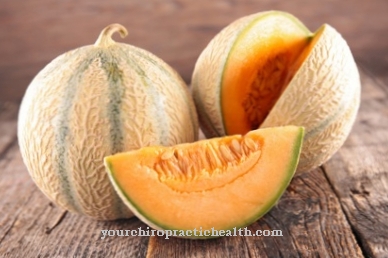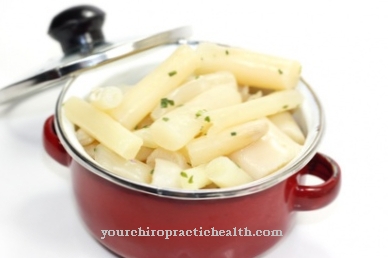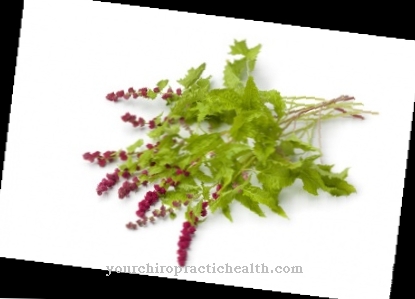The Lychee originally comes from China, where it has been grown for more than 4000 years. It was not until the beginning of the last century that the lychee tree was also planted outside the southern Chinese regions. The litchi not only inspires with its exotic taste, but also with its numerous health benefits.
What you should know about the lychee

In the original homeland of southern China, the lychee has been valued for more than 4,000 years. Nowadays the lychee trees also grow in other subtropical countries, for example in India, Thailand, Taiwan, Kenya, South Africa, Madagascar, Mexico and Australia. The tree, which belongs to the soap tree family, needs a subtropical climate to thrive.
Long, hot summers that offer a lot of moisture and very short and frost-free winters provide the best conditions for the tree. The evergreen plant, which can grow eight meters high, does not lose its leaves in autumn. The lychee is covered in a bowl. The texture of the reddish shell is reminiscent of the shell of the turtle. It is quite thin and soft, but can become hard and firm with early harvest or prolonged storage.
The litchi has a core inside. This seed is not edible and must therefore be removed before consumption.
Thanks to the optimal transport routes, the fresh fruit is available all year round in Germany. After peeling the pink or dark red lychee, the flesh shows up. It is white, has a sweet and sour taste and has a pleasant, slightly bitter aftertaste as well as a note reminiscent of nutmeg.
Importance to health
The lychee is a very healthy snack thanks to its diverse nutrients. The high phosphorus content in particular effectively helps to ensure a healthy energy metabolism. The essential substance can only be supplied to the organism from the outside through food.
The fruit also has a lot of vitamin C, which has a very beneficial effect on strengthening the immune system and defending against infections. The B vitamins contained in lychee support various metabolic functions. With the magnesium and calcium it contains, the lychee also ensures healthy bone, muscle and nerve activity. The exotic fruit helps reduce food cravings when dieting. The sweet taste of the lychee is a healthy alternative to chocolate or other processed candy. The refreshing and easily digestible lychee has a blood purifying effect and is good for the stomach and intestines.
Ingredients & nutritional values
| Nutritional information | Amount per 100 gram |
| Calories 66 | Fat content 0.4 g |
| cholesterol 0 mg | sodium 1 mg |
| potassium 171 mg | carbohydrates 17 g |
| Fiber 1.3 g | protein 0.8 g |
The lychee, the sweet vitaminbome, contains plenty of carbohydrates and just 135 grams of the pulp cover an adult's entire daily requirement for vitamin C. It also supplies the body with provitamin A, plenty of vitamins B1 and B2 and the important minerals potassium, calcium, phosphorus and magnesium. The fruit consists of around 80 percent water. Fruit sugar is also represented in the lychee with more than 15 percent. 100 grams of lychee has around 65 calories.
Intolerances & allergies
The edible portion of the fresh lychee contains a maximum of 10 mg sulfur dioxide and sulfite salts per kilogram of the fruit. It is well tolerated by most people, because the body's own enzymes enable rapid oxidation to the harmless sulfate.
In some people, however, consumption can lead to intolerance reactions such as asthmatic reactions. Some of the asthma patients in particular are affected by this. The lychee contains a lot of fructose, which should be taken into account by all those who value a low-carbohydrate diet or suffer from fructose intolerance. In the latter group, consumption of lychee can lead to gastrointestinal complaints, such as gas and diarrhea.
Shopping & kitchen tips
If you only choose the fine lychee in the canning, you are missing out, because the fresh fruit tastes much better and also contains more vitamins than its sister preserved in syrup. The lychee is sold either by weight or in the packaged form.
Since the fruit is very small, many specimens should be purchased. Fruits harvested unripe, which is supposed to extend the shelf life, have a poorer aroma. Therefore, a litchi should be tried before buying. Of course, this is only possible if the fruit is offered loose. The lychee must be harvested when fully ripe, as it does not ripen. Unripe fruits therefore do not belong in the shopping basket and can be recognized by the deep pink skin. When the fruit is ripe, the skin is red-brown, becomes brittle and can be broken easily. The skin of the lychee is very thin, which means that the pulp dries out quite quickly.
The lychee should be stored at at least 10 degrees (better at room temperature) and no longer than a week. The lychee can also be frozen very well if necessary. For this, the shell and possibly also the core are removed. Then the fruits can be put in a freezer box or freezer bag in the freezer. Peeling the litchi takes a little effort, but with a little practice it is very easy: the thin, hard peel of the litchi is scratched with a sharp knife and the litchi is pushed out. The shell can also be peeled off if it has not yet become so firm, similar to boiled eggs.
Then use your fingers to remove the inedible core from the pulp and the litchi is ready to eat. A fresh lychee delights with a snow-white, milky-looking pulp that smells of roses and tastes wonderfully sweet.
Preparation tips
Many people prefer to eat the lychee raw, for example in a delicious fruit salad or with a fine dessert such as an almond jelly with rose petals.It is also certain that the entire spectrum of the vitamin C bomb is absorbed. Thanks to its sweet and sour aroma, the lychee goes well with numerous dishes fresh or cooked and gives the dishes an interesting note. In addition, the healthy fruit with its valuable nutrient content makes a very important contribution to a balanced diet.
The exotic fruit goes well with Asian and tropical fish, meat and rice dishes, for example. The sweet and sour taste of the litchi offers a welcome change. Long cooking times are not necessary during preparation, as the fruit already has a very soft consistency when raw. The lychee is also a great decoration for cocktails and drinks as well as for an ice cream sundae or an exotic salad. In well-stocked stores, you can even get lychee honey, which is a tasty specialty from the USA.









.jpg)



.jpg)



.jpg)







.jpg)


